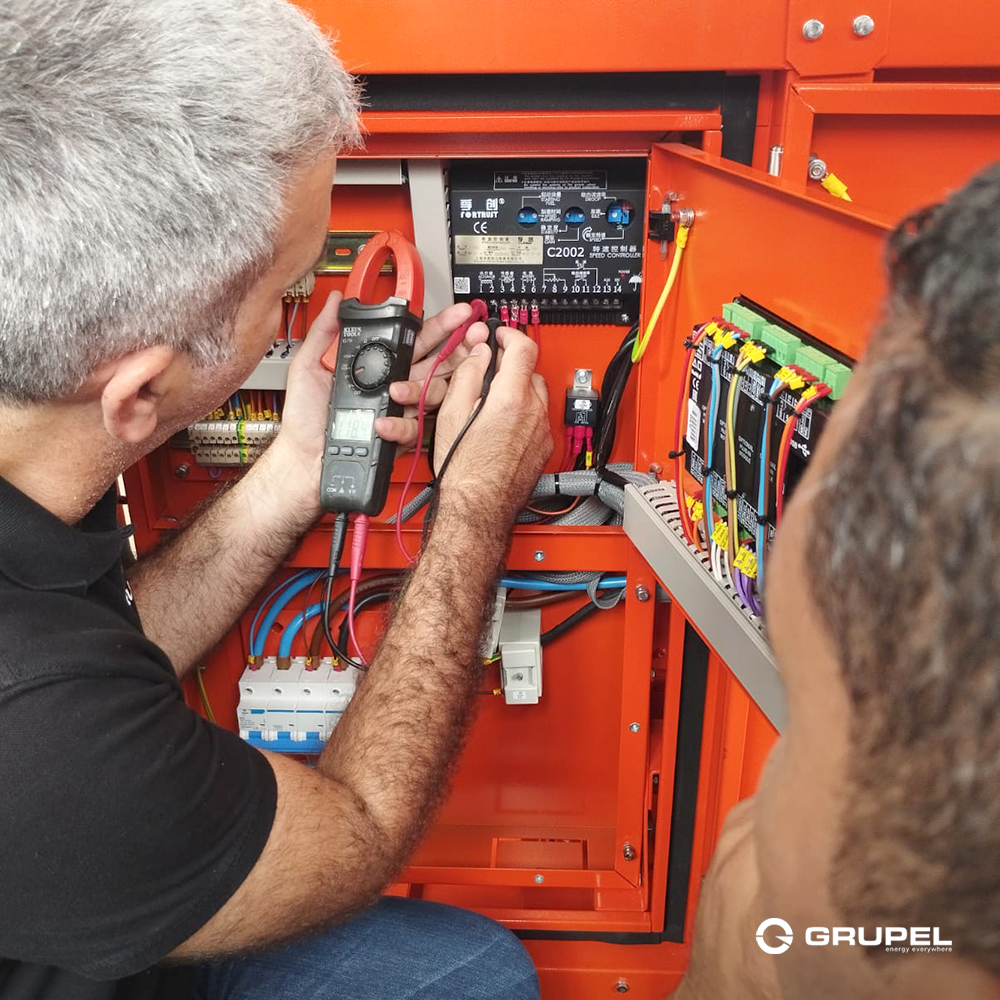Parallel operation of the diesel generator of Grupel
Diesel generators are an important part of many different industries. They provide electrical power in situations where the main electrical grid is unavailable or insufficient. A single diesel generator can provide a significant amount of power, but to achieve the required power and reliability, there is often a need for more than one generator working in parallel.
Basic principles of operation of diesel generators
Diesel generators convert the mechanical energy from the diesel engine into electrical energy. This is done through a generator (alternator) that uses the principle of electromagnetic induction. The main components of a diesel generator include:
1.Diesel engine: The main source of mechanical energy.
2. Generator (alternator): Converts mechanical energy into electrical energy.
3. Control panel: Controls and monitors the operation of the generator.
4. Fuel and cooling systems: Ensure the continuous operation of the engine.
Work in parallel
In order to provide electricity as a single source, diesel generators operating in parallel connect two or more generators to the same electrical network. This requires precise timing and control to ensure that the generators work in harmony. The main aspects of parallel operation include frequency, voltage and phase synchronization.
Frequency synchronization
The frequency of the electrical output of each generator must be the same, thus avoiding unevenness and potential damage to the electrical system. This is achieved by adjusting the speed of the diesel engines on each generator. With the help of electronic controllers that automatically regulate the speed of the motor, frequency synchronization is carried out.
Voltage synchronization
To ensure even load distribution, the voltage of each generator must be the same. Voltage regulation is done through automatic voltage regulators (AVRs), which monitor and adjust the output voltage of the generator.
Phase synchronization
To avoid phase differences that can lead to harmonic interference and inefficient operation, the phase of the electrical output of the generators must be synchronized. Phase synchronization is achieved by precise control of the time of switching on the generators to the system.
Advantages of working in parallel
Parallel operation of diesel generators offers many advantages:
1. Increased reliability: If one generator fails, the others can continue to provide electricity.
2. Greater power: The ability to combine the power of several generators provides greater capacity to handle large loads.
3.Flexibility: Generators can be turned on and off as needed, allowing for more efficient use of fuel and lower operating costs.
4. Load balancing: Spreading the load between several generators reduces the stress on individual machines and increases their life.
Synchronization and control technologies
Parallel operation of diesel generators requires the use of modern synchronization and control technologies:
Automatic Voltage Regulators (AVR)
AVRs are devices that automatically regulate generator voltage to maintain a constant output voltage regardless of changes in load or engine speed.
Speed control
Speed control systems regulate the speed of the diesel engine to maintain a constant frequency of the output voltage.
Synchronizers
Synchronizers are devices that monitor and adjust the phase angles, frequency and voltage of generators before they are connected in parallel. They ensure a smooth and safe connection of the generators to the electrical network.
Load management systems
Load management systems distribute electrical energy between different generators and consumers. They ensure optimal use of available power and prevent overloading of individual generators.
Parallel operation of diesel generators is widely used in various sectors, including:
Industrial objects
Hospitals and healthcare facilities
Telecommunications and IT centers
Public infrastructures
Running diesel generators in parallel is a complex but effective method of providing a reliable and flexible power supply.







